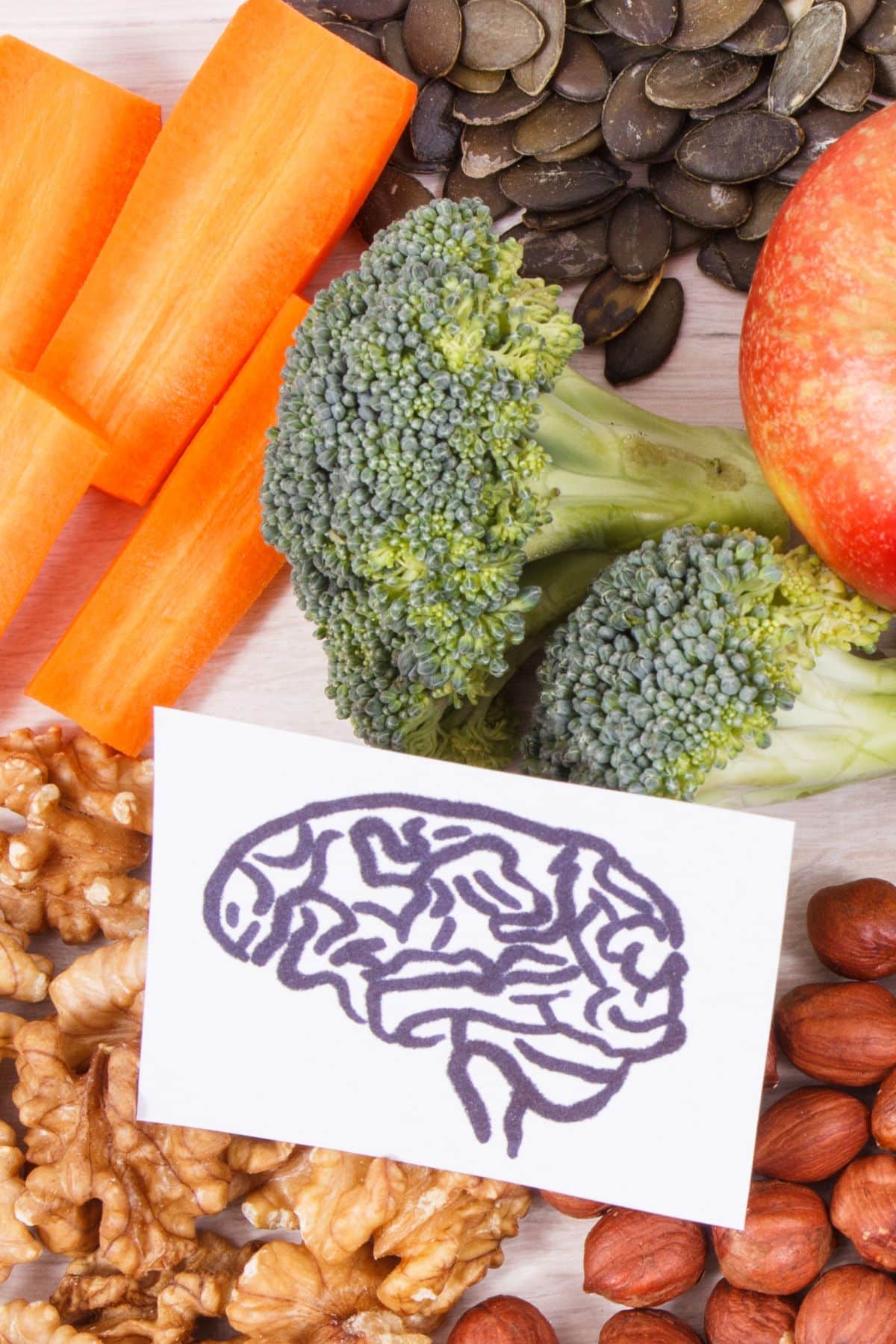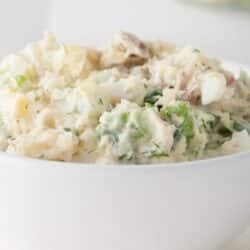Ancestral Diet for Beginners (What to Eat for Benefits)
Learn everything you need to know about the Ancestral Diet, including its potential health benefits and who may benefit from this way of eating. Learn what to eat and what to exclude in this exploration of the Ancestral Diet for Beginners.

What is an Ancestral Diet?
The ancestral diet consists of foods that our ancestors would have eaten.
The specific foods it includes depend largely on the location where your ancestors lived (their geographical location).
If you live near the sea, for example, then your ancestral diet would contain lots of seafood. If you are located further inland, then it’s likely your ancestors would have eaten more red meat.
But though the specifics are location-related, the overall emphasis of an ancestral diet is on consuming whole, natural, and organic foods, avoiding synthetic, processed ingredients altogether. It’s similar to a paleo diet, with a few differences.
Foods to Eat on Ancestral Diet
An ancestral diet is based on wholesome, nutrient-dense foods from natural sources and completely free from industrialized processes.
These foods should have been easy for our direct ancestors and paleolithic ancestors to access in the past. In other words, these would have been produced locally.
While the typical ancestral diet will vary from one region to another based on geography and culture, most will contain organic, unprocessed natural foods including:
- Fresh, vegetables and fruits
- Grass-fed meats and animal products (including organ meats)
- Pastured chicken and eggs
- Nuts and seeds
- Oils such as avocado, olive, and coconut oil (healthy fats)
- Animal fats like lard and tallow
- Wild-caught seafood
- Grass-fed, raw dairy (including dairy from goats and sheep)
- Fermented foods like kimchi and sauerkraut
- Beans and legumes
- Ancient grains, including amaranth, kamut, teff, barley, and quinoa
Foods to Avoid on Ancestral Diet
Perhaps even more important than the foods to include in an ancestral diet are the foods to strictly avoid.
Foods founding a modern Standard American Diet that are not designed for the human body include:
- Processed foods, including refined grains
- Refined sugar
- Vegetable oils like corn, canola, and soy (industrial seed oils)
- Sugar
- Alcohol
- Fast food
Reasons to Consider an Ancestral Diet
So why should we think about changing our diets to eat only the foods our ancestors had access to?
The answer is that ancestral eating may benefit our health in many ways. Indeed, experts say that the human genome (our complete set of genetic information) has barely changed since modern early humans first existed. This means that the human body remains adapted for the foods consumed at that time.
Location matters, too, because people living in cold regions where their ancestors ate mainly meat, dairy, and fat may be better adapted to those foods and absorb their nutrients more readily.
It’s easy to see that the modern diet – rife with refined ingredients and processed foods – certainly hasn’t done mankind any favors!
Unhealthy and “fast” foods have become cheaper, more popular, and much more easily accessible than the types of healthy meals our ancestors would have enjoyed.
But the result has been a significant increase in chronic illnesses like obesity, metabolic syndrome, autoimmune diseases, Type 2 diabetes, and heart disease (cardiovascular disease).
So, if you suffer from lifestyle-related diseases, you may want to consider switching to a more ancestral-based approach.
Potential Health Benefits
So what are the possible benefits of switching to an ancestral diet based on organic, locally sourced ingredients?
Rather than looking at this approach as one of the new fad diets, consider traditional diets as the way our bodies were evolved to eat.
It is likely that eating more real food and ancestral foods will include more essential nutrients and will benefit overall health. Here are some additional benefits of eating like our hunger-gatherer ancestors.
1. Improved gut health
Medical experts agree that our overall good health depends on how well we digest our food and the balance of microorganisms (known as the microbiome) that live in our digestive tract.
The microbiome may benefit from the fiber-rich ancestral diet because it is believed to help improve the diversity of the gut’s bacteria and aid digestion.
This is in contrast to the modern diet, packed with refined grains and sugars that are believed to contribute to the poor gut health prevalent today.
Most probiotic-rich foods are ones that our ancestors would have eaten. This includes yogurt, sauerkraut, kefir, and more.
2. Reduced obesity
The modern, unhealthy diet of fast foods, added sugars, and processed meals is one of the biggest contributors to the obesity epidemic present in the United States and other developed countries.
These foods are filled with empty calories, meaning that they cause you to gain weight without offering any real nutrition. Many of them are very unsatisfying, too, so you end up feeling hungry more often and reaching for even more unhealthy snacks.
The ancestral diet contains nutrient-dense foods and sources of lean protein that leave you feeling full, meaning that fewer calories need to be consumed.
The result tends to be fat loss, muscle gain, and better body composition overall.
3. Reduced inflammation and autoimmune disorders
Inflammation is how your body responds to an infection, injury, or allergy, often causing pain, swelling, and redness. But this should only last for a limited period of time, until the trigger that caused it is under control.
Chronic inflammation, however, is different.
Rather than a normal response designed to restore health to the body, it arises for no clear reason and can last indefinitely. Worse, it harms the body rather than heals it, potentially leading to chronic diseases.
Elements of the modern diet such as refined grains and added sugars are linked to chronic inflammation.
Switching to an ancestral diet that forbids these ingredients may lead to a reduction in inflammation throughout the body and help you avoid the conditions associated with it.
These include cancer and heart disease, plus autoimmune conditions like type 1 diabetes, lupus, and rheumatoid arthritis.
4. Enhanced cognitive function and mental clarity

Your brain is another bodily organ very dependent on a nourishing diet for its overall good health.
The foods you eat can affect not only its structure and function but can also influence your mood.
The nutrient-rich ancestral diet provides a range of vitamins, minerals, and antioxidants to promote brain health, helping you think clearly and retain information well.
5. Reduction in chronic diseases
Chronic diseases like diabetes, cancer, autoimmune conditions, and heart disease can be caused by factors such as inflammation, high blood pressure, and a lack of certain nutrients.
Levels of these diseases have soared in modern times and the CDC reports that six in ten American adults have a chronic disease.
The ancestral diet can address these problems, helping keep your blood pressure stable, minimizing inflammation, and providing the nutrients your body needs.
By improving your digestion, it also helps your body absorb these nutrients more effectively.
Risks of Ancestral Diet
While following an ancestral diet doesn’t pose a risk to your health, there are a couple of things to take into consideration before making the switch.
1. There is no “one-size-fits-all” eating plan.
Most diets list very clearly the things that you should include, and the things you shouldn’t.
When it comes to the ancestral diet, the list of foods to avoid is pretty clear, but it can be harder to determine exactly what foods you should be eating.
That’s because our ancestors would have had access to different types of foods depending on their culture, and whereabouts in the world they lived.
The key is to concentrate on local and seasonal foods that haven’t been overly-processed.
Read the labels on any packaged foods and avoid ingredients you can’t pronounce.

2. Potential nutrient deficiencies if not balanced properly
When switching to an ancestral diet, it’s important to make sure that you replace any foods you are no longer eating with healthy alternatives.
For example, you may regularly eat certain fruits that are not compatible with an ancestral diet, maybe because they are imported from overseas. Once you stop eating those fruits, you will need to look for locally grown alternatives that provide similar nutrients.
Practical Tips for Beginners
Making the switch to an ancestral diet can be a little overwhelming at first. Here are a few tips to help.
- Start small. Each day, replace one food that you eat with an organic, grass-fed, or pasture-raised version.
- Gradually replace every packaged, processed food you buy with a natural alternative. Swap canned fruits for fresh fruit, for example, and ditch white rice or pasta in favor of whole, ancient grains.
- Plan ahead to give you the time you need to track down the appropriate foods. Look for simple recipes with fewer ingredients and focus on cooking at home rather than eating out.
- If possible, start growing fruits and vegetables at home using only organic methods.
- Look for forums or community groups focused on ancestral diets for tips and support.
FAQs
Following the Ancestral Diet can be challenging for vegetarians or vegans because it relies heavily on meat and fish. However, with some adjustments, such as increasing the intake of plant-based proteins like nuts and seeds, it’s possible to adapt the diet to some extent. But it’s important to ensure all nutritional needs are met, especially for protein and certain vitamins and minerals that are typically found in animal products (see my article on the dangers of a vegan diet).
The Ancestral Diet is a broader concept, encompassing various traditional diets from different ancestral cultures, allowing for more regional and cultural food variations. A Paleo approach specifically imitates the presumed diet of Paleolithic era humans and strictly excludes grains, legumes, and dairy. While both emphasize unprocessed foods, the Ancestral Diet offers more flexibility and may include some traditional grains or dairy, unlike the more rigid Paleo diet.
More Helpful Diet Articles You Might Like
Conclusions
Today’s fast-paced lifestyle has contributed to a rise in the consumption of heavily processed, fast foods and the subsequent development of chronic illnesses such as obesity and heart disease. The transition to an ancestral diet may seem daunting at first, but it can bring so many benefits to your well-being that it’s well worth the effort!
Don’t forget to join my newsletter list to get exclusive clean eating recipes and tips. The newsletter is 100% free with no spam; unsubscribe anytime.
About the Author: Carrie Forrest has a master’s degree in public health with a specialty in nutrition. She is a top wellness and food blogger with over 5 million annual visitors to her site. Carrie has an incredible story of recovery from chronic illness and is passionate about helping other women transform their health. Send Carrie a message through her contact form.
Note: this post is for informational purposes only and is not intended as medical advice. Please consult your healthcare provider for recommendations related to your individual situation.






















